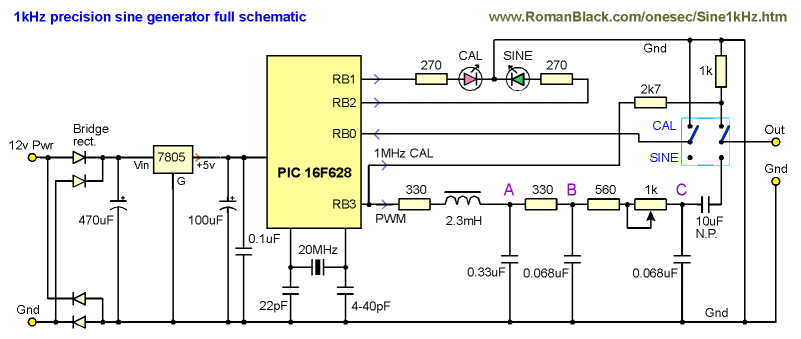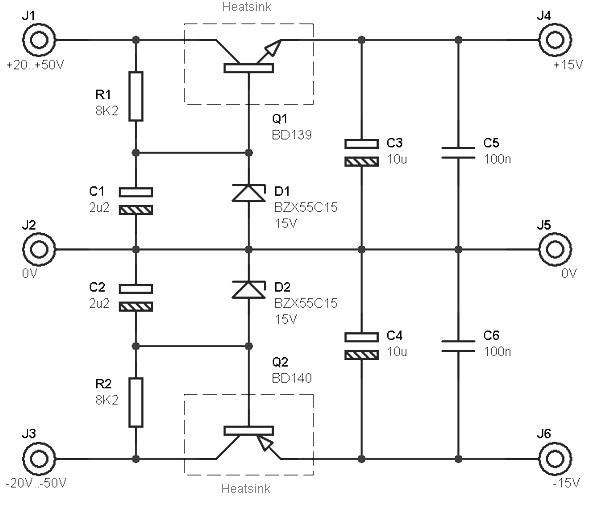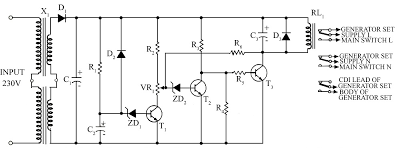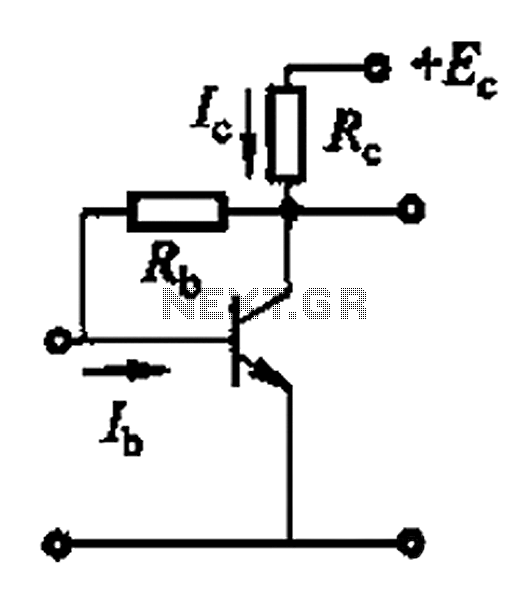
Transistor Pulse Generator
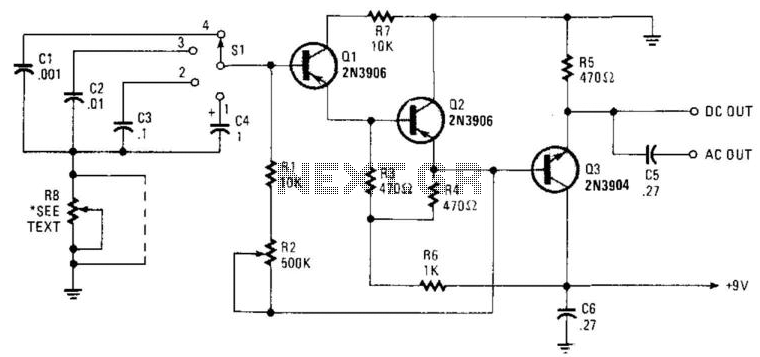
Seven narrow pulses ranging from 2 Hz to 50 kHz are generated by this circuit. Capacitors C1 through C4 provide frequency ranges in decode steps. Resistors R1 and R2 regulate the charging time of capacitors C1 through C4. R2 is a potentiometer utilized to adjust the frequency. Resistor R8 controls the pulse width, which varies between 7 ms and 10 ms. Depending on the frequency, R8 can be omitted if it is not required.
This circuit is designed to produce a series of narrow pulses with a frequency range from 2 Hz to 50 kHz, making it suitable for various applications such as timing, signal generation, and modulation. The core of the circuit relies on capacitors C1 through C4, which are configured to define different frequency ranges through a process known as decoding. This allows the circuit to produce distinct pulse frequencies by altering the charge and discharge cycles of these capacitors.
Resistors R1 and R2 play a crucial role in controlling the charging time of the capacitors. R1 is typically fixed, providing a baseline resistance, while R2 is a potentiometer that allows for fine-tuning of the frequency output. By adjusting R2, the user can manipulate the time constant of the RC (resistor-capacitor) network, thereby altering the frequency of the generated pulses.
Additionally, resistor R8 is included in the design to control the pulse width of the output signals. The pulse width can be varied between 7 ms and 10 ms, depending on the specific requirements of the application. In scenarios where precise pulse width is not critical, R8 can be omitted from the circuit to simplify the design and reduce component count without significantly affecting performance.
Overall, this circuit provides a versatile solution for generating narrow pulses across a wide frequency spectrum, with adjustable parameters to suit various electronic applications. Seven-V narrow pulses from 2 Hz to 50 kHz are produced by this circuit. CI through C4 provide frequency ranges i n decode steps. Rl and R2 control the charging time of CI through C4. R2 is a potentiometer used to set the frequency. R8 controls pulse width. Pulse width varies from 7 & to 10 ms. Depending on the frequency, R8 can be deleted if it is not needed. 🔗 External reference
This circuit is designed to produce a series of narrow pulses with a frequency range from 2 Hz to 50 kHz, making it suitable for various applications such as timing, signal generation, and modulation. The core of the circuit relies on capacitors C1 through C4, which are configured to define different frequency ranges through a process known as decoding. This allows the circuit to produce distinct pulse frequencies by altering the charge and discharge cycles of these capacitors.
Resistors R1 and R2 play a crucial role in controlling the charging time of the capacitors. R1 is typically fixed, providing a baseline resistance, while R2 is a potentiometer that allows for fine-tuning of the frequency output. By adjusting R2, the user can manipulate the time constant of the RC (resistor-capacitor) network, thereby altering the frequency of the generated pulses.
Additionally, resistor R8 is included in the design to control the pulse width of the output signals. The pulse width can be varied between 7 ms and 10 ms, depending on the specific requirements of the application. In scenarios where precise pulse width is not critical, R8 can be omitted from the circuit to simplify the design and reduce component count without significantly affecting performance.
Overall, this circuit provides a versatile solution for generating narrow pulses across a wide frequency spectrum, with adjustable parameters to suit various electronic applications. Seven-V narrow pulses from 2 Hz to 50 kHz are produced by this circuit. CI through C4 provide frequency ranges i n decode steps. Rl and R2 control the charging time of CI through C4. R2 is a potentiometer used to set the frequency. R8 controls pulse width. Pulse width varies from 7 & to 10 ms. Depending on the frequency, R8 can be deleted if it is not needed. 🔗 External reference
